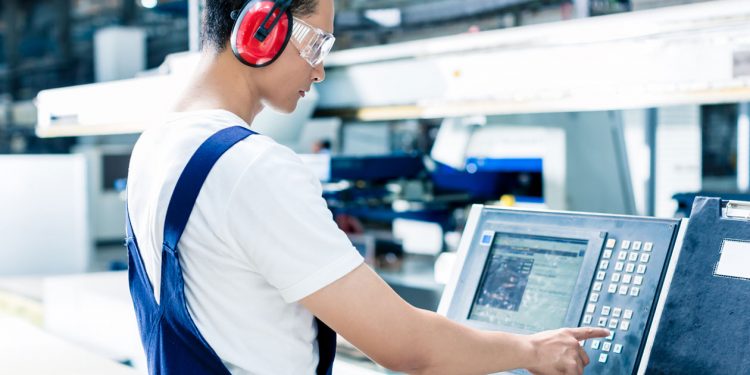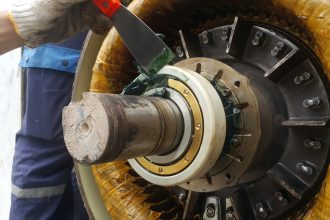The Importance of Digitization in Material Handling

It has long been the goal of warehousing managers to be able to “see” every transaction within the four walls of the facility. To do so has always meant the ability to collect as much data as possible from the “shaft to the cloud.” The good news is that this goal is getting closer in reach than ever, thanks to the digitization of material handling.
The benefits of digitization of material handling are many. One is that peak season used to be a defined by time of year—those days are gone with the meteoric rise in ecommerce. Combine that with the labor shortage, and there’s no time for bottlenecks in a facility. When you can capture enough data to see the why behind a bottleneck, you can clear it out before it amounts to any real trouble.
Warehouse managers can achieve this by using tools like predictive maintenance, which allow them to see when equipment failures might be on the horizon. They can be proactive and avoid the scenario. Combining sensors within the equipment with digitized tools, they can gather the intel they need to stay ahead of the game.
While these tools exist, many warehouses struggle with getting from point A to point B. Many traditional automation solutions are not fully ready yet for digitization. There are go-betweens, however, to help the bridge the gap in an affordable manner.
An edge device—a type of computer or industrial PC—becomes the data collector. It connects to all the sensors and motors in the warehouse and collects the data. This device sits “at the edge” of the operation, on the floor level. It can do some of the mathematical computations needed for accurate data collection. The biggest benefit is that it offsets the need for having to send everything to the cloud, which can be costly. If you’ve got some of the data collection happening “locally” and not on the cloud, you can make direct decisions on the spot and save the cloud computing costs.
Right now, ecommerce retailers are leading the charge with edge devices, and small parcel carriers are not far behind. The good news is that edge devices are practical at any scale—this means that they are within reach for medium and even small facilities.
If you’re soon building a greenfield facility, a good data highway should be a part of the plan. If you consider the appropriate modern machine controller and control network, you can collect the data for digitalization without a separate edge device or separate parallel network. Data can then be communicated across the control network without compromising throughput for machine control. Analytics can happen in the machine controller along with the PLC functions and connect to the cloud.
If you’re in a brownfield site, the task is a bit harder, but not at all out of reach. Your equipment might be discreet wired, for instance, and not connected to a fieldbus network. Or you might have a mix of legacy and modern fieldbus networks, or not have the sensors in your equipment that newer models feature, which allow predictive maintenance data capture. Modern communication protocols are a critical part of the strategy. It’s important to select a network that supports connectivity to current network architectures as well legacy protocols to maximize access to critical data in the warehouse. (ProfiNet, EtherCAT and EtherNet/IP are some good choices to consider.) Then all you need are a few additional sensors to collect data for additional insights such as for power measurement, vibration measurement (condition monitoring), or AI Machine Learning data to provide continuous equipment optimizations.
Moving forward, all warehouses will be working toward less dependency on hardware and less obsolesce, creating a true digitized facility with full visibility.
For more articles and podcasts about Conveyors and Sortation:
Why You Should Consider Decentralized Networks
Podcast: CSS – HOW TO AUTOMATE FOR THOSE WHO HAVEN’T …
Electrical Motor Standard Differences
From Preventative To Predictive Maintenance Of Automation
Large Parcel Shipping Is Growing
5 Ways Robotics Improves Conveyor And Sortation Induction
For more information about the Conveyor and Sortation Solutions Industry Group, click here.



